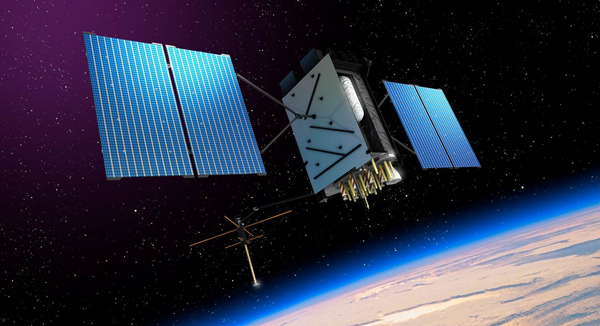
The final payload of the next-generation of Global Burst Detector, GBD III, was delivered Nov. 7, 2017. The first launch of GBD III is expected in mid-2018. This generation, hosted on GPSIII, will join GBD systems on prior generations of GPS satellites. The Global Burst Detection system looks for nuclear detonations around the world, offering real-time information to US policymakers about potential activity. Sandia has developed and delivered satellite-based nuclear detonation detection systems since 1963. (6700)
A multi-level security special communications system that supports multiple transport segments has formally been declared an Initial Operational Capability by DoD. A $50 million, five-year effort, the Special Communications Portal for Enterprise (SCOPE), will be operated out of Sandia’s California site. The highly complex SCOPE application is built on a modern software architecture and includes ~500,000 lines of source code supporting national security needs. In April and July 2017, the project completed three weeks of customer-witnessed acceptance testing of functional requirements. (6300, 2600, 5100, 8700, 9300, 10600, 10700)
A workshop spearheaded by Sandia researcher David Reyna eventually led to solving a 43-year-old physics mystery. Using the world’s smallest neutrino detector, a collaboration of 80 researchers from 19 institutions and four nations detected and characterized coherent elastic scattering of neutrinos off nuclei. Sandian Belkis Cabrera-Palmer oversaw the analysis of data collected with the Sandia-developed neutron scatter camera. Published as a Science cover article, the COHERENT project’s breakthrough research paves the way for additional discoveries in neutrino behavior and the miniaturization of future neutrino detectors. (8600, LDRD)
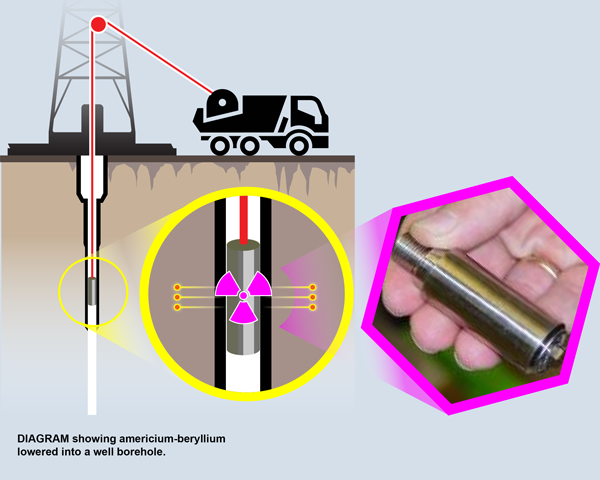
Sandia and Worcester Polytechnic Institute completed a study demonstrating particulate resuspension of americium-241 is much lower than previously estimated. Resuspension is a critical parameter in modeling the prospective radiation dose in the event of an incident. Since there are more than 7,000 well-logging sources worldwide that use Am-241, this new information can be used by policy makers to re-evaluate radiation protection measures to decrease risk to emergency responders, radiological security specialists, and the public. (6000)
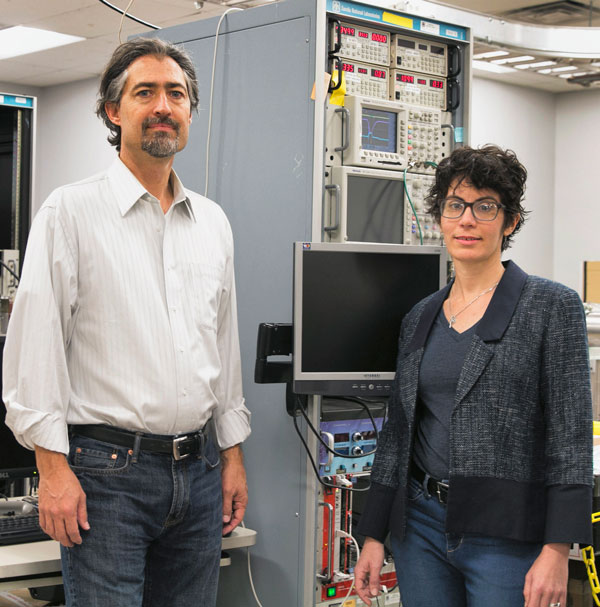
Sandia’s Physical Security Center of Excellence was tasked to conduct engineering site surveys at nine NNSA sites to gather current physical security system status. Sandia developed optimized technical approaches, rough estimates, and a master schedule to revitalize the security systems at all nine sites in accordance with DOE directives and funded and directed under a Congressional mandate “Center for Security Technology, Analysis, Response and Testing (CSTART).” The 10-Year plan was formally approved by General Klotz, NA-1, in August 2017.
Due to the significant proliferation in small Unmanned Aerial Systems (UAS) usage and sales, the commercial sector has begun to market detection, assessment, and neutralization systems to counter potential UAS concerns to national security. Sandia (Group 6520) was tasked by NNSA to develop a methodology to test and evaluate cUAS commercial-off-the-shelf products and provide decision makers with information on performance, maturity, and technology gaps. The cUAS T&E methodology (see illustration at bottom of page) developed provided a comparable, scalable, and repeatable standard whereby all systems could be evaluated equally. (6500)

Sandia (Group 6510) was tasked by DOE to deliver a physical security system solution to include a perimeter intrusion detection and assessment system and supporting security infrastructure at the site. The project was a three-year effort funded for $12 million. The initial kickoff occurred in January 2015, and the final Government Acceptance Testing was finalized and approved in November 2017. This project represented the first major security design and implementation by Sandia for DOE in several decades. (6500)
The next generation Global Burst Detector payload, III Prime, is in the critical design phase. This year, a system-level test campaign commenced to perform system-level Assembly, Integration, and Test activities with high-fidelity subsystem engineering units, cables, and system test equipment. Two campaigns successfully tested the integrated payload verifying functionality and interfaces. At the end of the multi-year test series, system test equipment and test processes will be ready for flight use, reducing execution risk in a challenging schedule to deliver the first GBD flight systems to GPS host space vehicles.
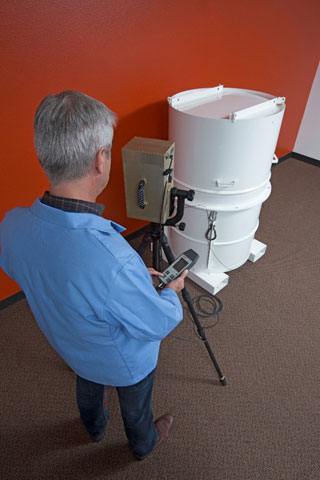
Sandia designed, built, and delivered to the Defense Threat Reduction Agency a replacement for radiation detection equipment (RDE) employed by US arms control treaty inspectors. The new RDE was approved for use in May 2017 and deployed in Russia for a New START (Strategic Arms Reduction Treaty) inspection. The RDE is used to verify that items declared to be nonnuclear are indeed nonnuclear. The original RDE was more than 25 years old, and maintenance was difficult. The replacement RDE offers improved sensitivity, durability, safety, and ease of use. (6000, 5000)
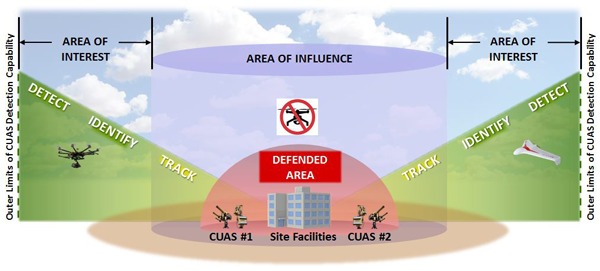
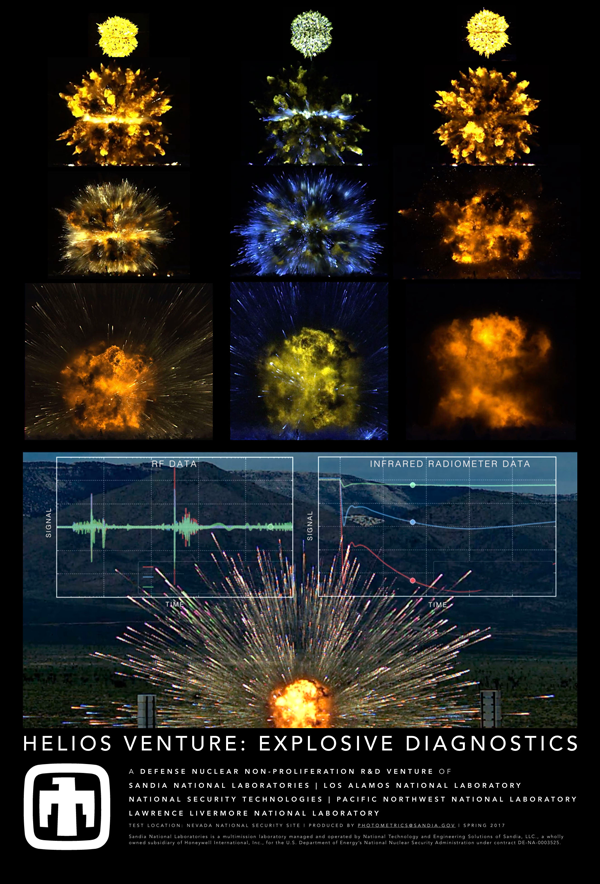
The Helios Venture successfully executed the Pyrois High Explosive (HE) test campaign in FY17. This NA-221 Office of Proliferation Detection Venture conducted 10 tests and gathered 13 unique collection types over five weeks. The data resulting from this campaign are unprecedented and enable forward modeling and simulation tools to simulate signals produced by HE. Sandia introduced a plenoptic camera, gathering videos that identify distinctive signature bands. Other remote optical and electromagnetic emission collections were made, clearly distinguishing the unique articles used in the tests. (6700, 5800, 5300, 1500, 1800, LLNL, LANL, PNNL, NSTec)